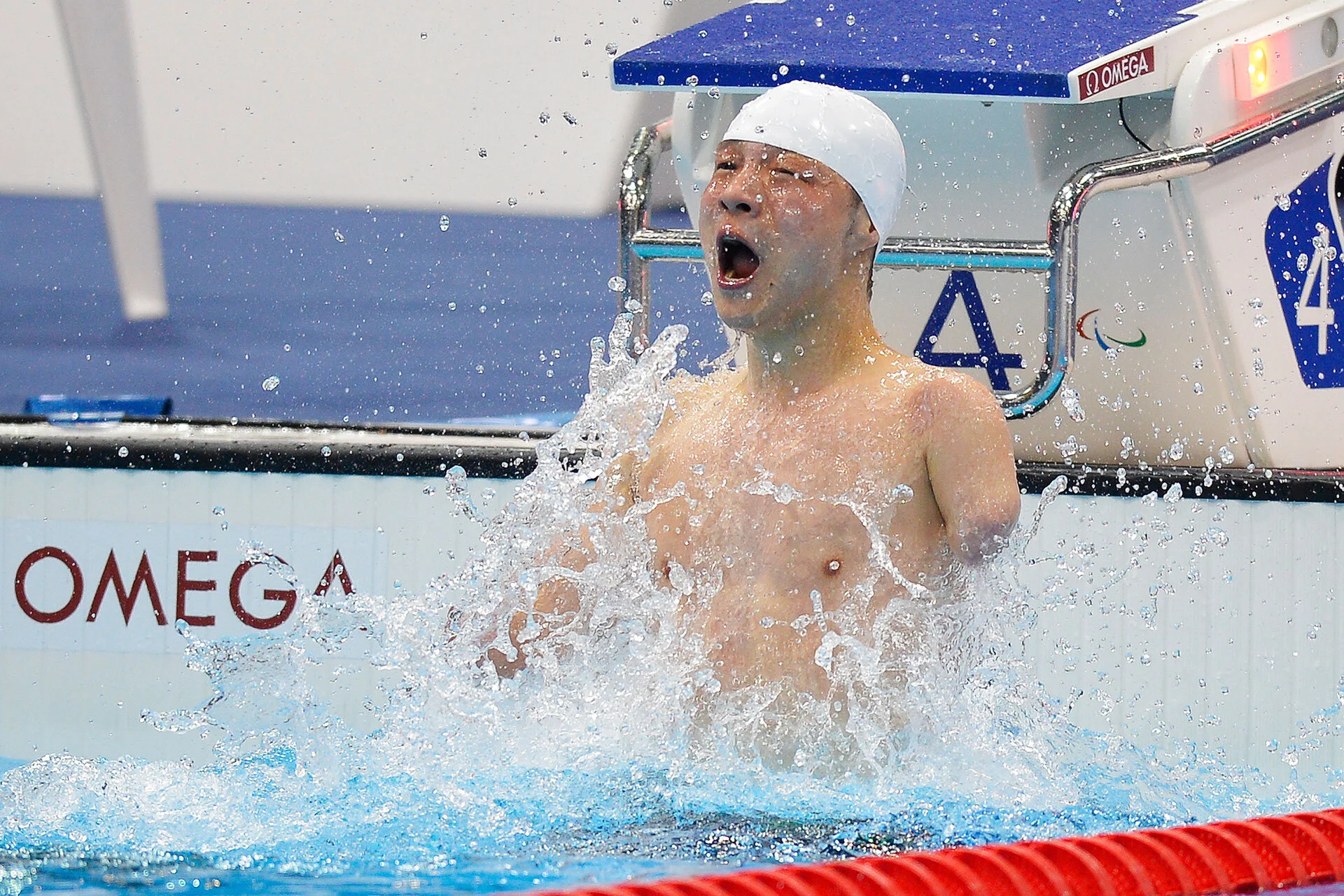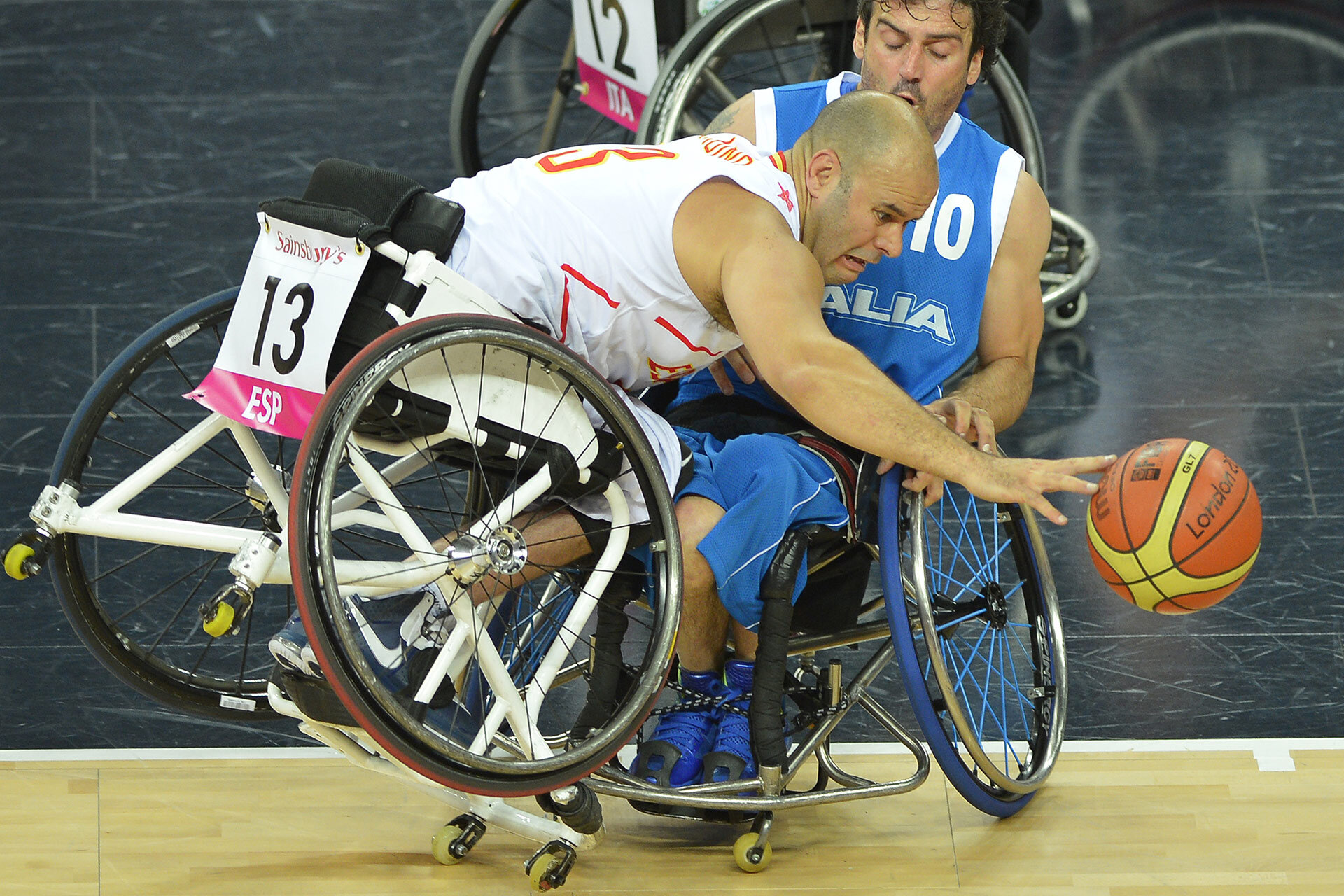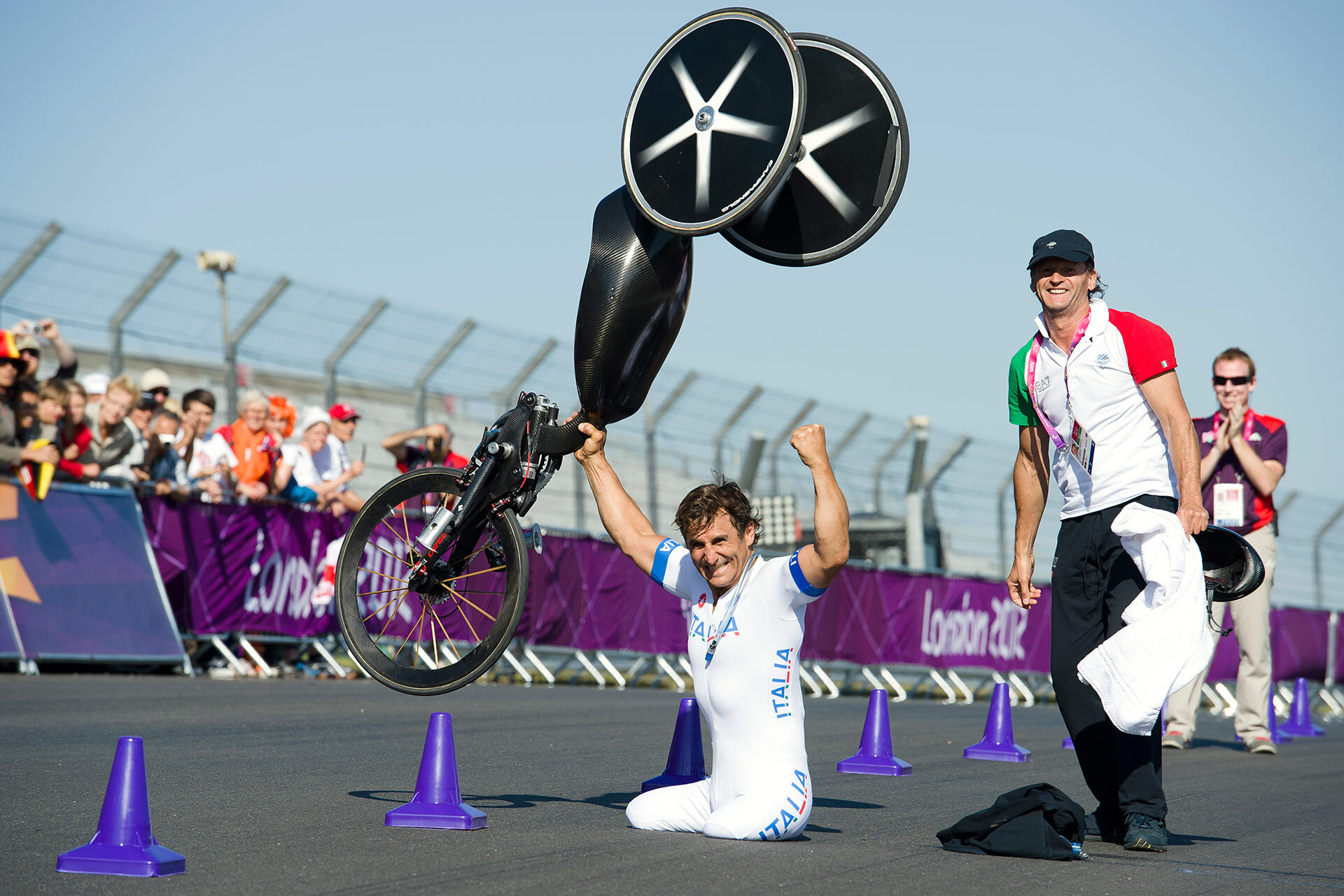The London 2012 Paralympics
Phew. So that’s everything out of the way then. After an incredibly long year involving the Queen’s Jubilee, Wimbledon and then the Olympics, it was time for a well earned rest. What’s that you say? Paralympics? It’ll be worth a look, I suppose.
Before I began shooting at the 2012 Paralympic Games, I put a lot of thought into how I wanted to approach it. The easy way would be to treat it as a “portfolio” job, covering it purely as a chance to fill my archive with potentially voyeuristic images of disabilities. This was something that I really didn’t want to do, as I’m sure you can imagine. I knew that I wanted to shoot the Paralympics as I covered the Olympic Games; as a chance to show people performing at their best. At times, this would mean not including the wheelchair, prosthetic leg or obvious sign of disability. If I was prepared to do a nice close-up details shot of an Olympian’s hands as they prepared before an event, why should I purposefully recompose my image to include their hands AND wheelchair in every frame? Is it the photographer’s job to validate the athlete’s entry to the Paralympics at every opportunity?
With this in mind, I also had to find the balance where I wouldn’t actively avoid showing any signs of disability, as it was up to me to photograph the person. As I hope you can understand, it’s a fine line to walk. Writing this now, I can see how hung up I got on getting this right, but I think that’s one of the benefits of the Paralympic Games. It gave people the chance to really think about their perceptions of disability, and how they personally approach the subject. I found myself checking to make sure that my photographs weren’t simply about recording someone’s lack of limb, for example, but that they actually made interesting shapes, in the same way I would with an Olympian’s body.
I know it’s been discussed in detail on many channels and pages elsewhere, but I think it’s a real shame that the Olympics and Paralympics have to be separated. I’ve heard excuses before that modifications have to be made and it would prove too hard logistically to organise, but having shot both, I’ve failed to see what these massive changes would be. Accommodation would need to be wheelchair friendly and have certain user-specific options, but as it’s all made from scratch for the Games, there’s no reason it can’t be done. The only reason that I can see is the question of who wants to see Paralympian athletes. It sounds harsh but I’m happy to hear your opinion if you know of another reason. While networks from all over the globe fought to pay unbelievable figures for rights to broadcast the Olympics, the Paralympics was a media ghost town by comparison.
It would be nice to be able to say that I was speaking from the higher moral ground, but unfortunately everyone, including AFP reduced their coverage down to, on average, at least a quarter of what they’d used for the Olympics. Concern that this was just penny-watching by the chiefs was negated by watching the world-wide usage of images as the Paralympics continued. Demand for images and content was high in the UK and across Europe, but the larger picture showed that the world’s interest matched that reduced staffing level. It’s a real shame as in so many ways, these athletes have put even more effort in to be where they are today.
Anyway, sport…
You know when you see basketball players leaping through the air to slamdunk the ball into the basket? These guys in wheelchair basketball play with the basket set at the same height. Yup, not only are they in wheelchairs, but the basket is set at 10 feet off the court. If it were me playing, I’d be demanding a 6 foot height limit. Mind you, I’d also be pleading to be taken off the court as somehow there’d been some terrible mix up and I was being forced to participate in the Paralympics.
During the Olympics, I was kept at a healthy distance from the Athletics track by the powers that be, mainly due to my total lack of experience, but also because the photographers that get to shoot track and field cling to it with all their might, as it does produce some of the best moments of any Games. With the team covering the Paralympics being stripped down to such a small crew, I finally got the chance to be inside the stadium for something other than an opening or closing ceremony. My main position for these sessions was inside the grotto of doom; a pit beneath the regular media stand that looks along the length of the 100m track. Being set into the ground, the photographer gets to shoot at near-ground level, creating some really dynamic angles.
One of the biggest stories of the Paralympics came from, undisputedly the biggest star on the world stage; Oscar Pistorius. For those that didn’t follow the saga, Oscar basically accused Brazilian athlete Alan Fonteles Oliveira of cheating by using longer than regulation “blades”. Just after losing a very important race is probably not the best time to interview the hot favourite, but his comments didn’t seem that sporting. After apologising, the medal ceremony the next day was supposedly being enjoyed between friends. I can’t say I’m that sure about that.
The challenges that all of the athletes face were incredible in their diversity, but those who took part who were partially-sighted or entirely blind, must have a very unique mindset. Being able to just run, jump or swim as fast as you can in a direction, without holding back, must go against everything your self-preservation instinct must be screaming at you. Both the long jump and triple jump features a guide who literally points the athlete in the right direction before rushing down to the pit. When they’re in position, they clap, shout and generally make some noise, so that the athlete charges, at full pelt, towards the voice before leaping into the void. Incredible. The same goes for those who took part in the track events. With a guide runner by their side holding a strap in their hand, they take off as fast as they can and just rely on the guide to get them through safely.
Sadly it doesn’t always work out for the best. Nearing the final few metres of the womens 400m T12, Guilherme Soares de Santana stumbled and fell, dragging the blind athlete Terezhina Guilhermina to the ground with him. Not his best moment, I’m sure.
Still, he probably didn’t feel as bad as George…
I have an admission to make. I’d never heard of Alex Zanardi until I turned up at the road cycling event at the Brands Hatch motor racing circuit. To be fair, that’s nothing new as I barely recognise a single name when I shoot a Premiership match, but to cover an event that is solely based around someone you’ve never heard of is a little unusual. Anyway, it’s fair to say I do know about him now. Having watched a clip of the horrendous moment that led him along this path, it was also fantastic to see the BBC incidentally charting his lowest point right through to his Olympic gold in three short headlines within their “related links” on this page. What an incredible rise from the ashes.
My final discipline of the Paralympics was wheelchair tennis. Having only ever seen it briefly at Wimbledon, it was enjoyable to at least return to a game I vaguely understood. It’s fair to say the Dutch own wheelchair tennis. Pretty much every match I saw involved between one and four members of the Netherlands’ team on court at any one time. Only the mens single final avoided any tang of orange with Japan’s Shingo Kuneida taking the top spot.
So that’s it. Over. Complete. Fin. All of those massive events that have been looming on the 2012 calendar are now ticked off. With life returning to normal, it’ll be fun to see what randomness Old Mother News throws at me for the rest of the year. Despite not being the biggest sports fan around, I can certainly say that the Olympics and Paralympics have set a high benchmark for the rest of the year to live up to.







































